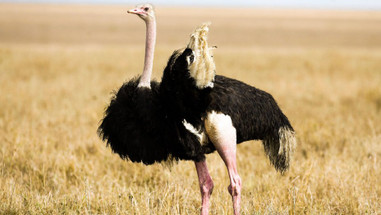Jul 19th 2019
Fascinating Facts About Ostriches
The ostrich industry in the United States has gone through several peaks and valleys since these large, flightless birds were first imported here from Africa in the 19th century. The last resurgence started in the early 1980s, but changes in importation regulations and market oversupply ended that run by the late 1990s.
Today, the domestic ostrich industry is having a hard time keeping up with demand. Besides that it resembles beef in appearance and taste, ostrich meat is lower in saturated fat, making it a healthier alternative.
Here are some other interesting tidbits about these birds.
Like other members of the ratite bird family, ostriches are incapable of flight due to their small wings and flat breastbones. Other ratites include emu and kiwi.
When fully grown, ostriches stand about 8 feet tall and weigh up to 400 pounds, making them the largest in the world.
Ostrich eggs are the largest of any living bird, weighing in at about 4 pounds and measuring approximately 4 inches in length. One ostrich egg (about $40) yields the equivalent of about two dozen chicken eggs in volume.
Despite what many of us learned growing up, ostriches do not hide their heads in the sand. They dig nests in the dirt and use their heads to turn the eggs—and from a distance, this can look like they’re burying their heads in the ground.
Ostriches can reach a top running speed of 45 miles per hour. That’s even faster than Wile E. Coyote’s cartoon nemesis, the Road Runner, whose top speed is “only” 20 miles per hour.

